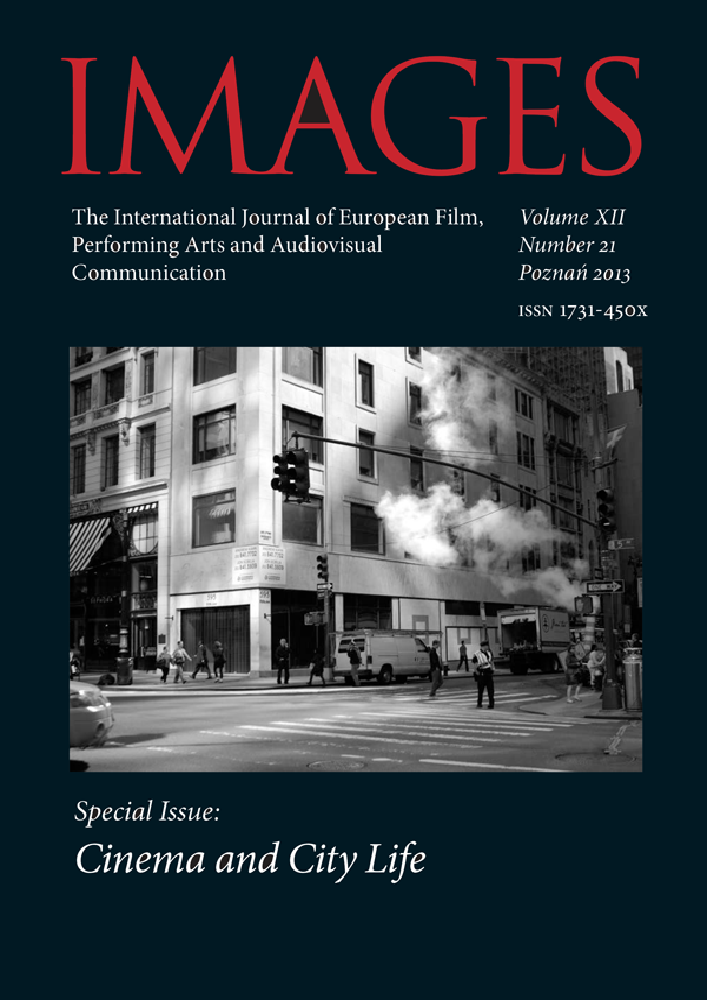Abstract
Celeberrimae urbes – celebres praedicatores. Mendicant friars as a medium of the medieval city.
This article deals with media studies and discusses a problem thoroughly examined by historians of the Medieval period concerning the expansion of mendicant orders and their ministry work in the flourishing European cities of the 13th century. The research perspective – which differs from a strictly historical and theological point of view – emphasizes the impact of mendicant orders on communication in the rapidly changing social conditions of the era. Therefore, it allows one to interpret confrontations with wandering heretical preachers in the 12th century not only as a religious conflict, but also a confrontation with a certain way of distributing ideas that contested the existing state of affairs. It also makes it possible to expose the enduring features of the media role of the preacher, which determined his popularity until the Reformation.
References
F. Petrarka, Do dominikanina Giovanniego Colonny. O tym, że należy miłować prawdę, a nie doktryny, oraz o sławnych miejscach miasta Rzymu, w: idem, Pisma podróżnicze, przeł. i oprac. W. Olszaniec, Wydawnictwa UW, Warszawa 2009 („Biblioteka Renesansowa”, t. 2), s. 79–89.
P. Burke, The Renaissance sense of the past, Arnold, London 1969, s. 2. Cyt. za: A. Assmann, Erinnerungs¬räume. Formen und Wandlungen des kulturellen Gedächtnisses, C.H. Beck, München 1999, s. 314–315.
L. Benevolo, Miasto w dziejach Europy, przeł. H. Cieśla, „Krąg”, „Volumen”, Warszawa 1995, s. 27–28.
J. Le Goff (Kultura średniowiecz¬nej Europy, przeł. H. Szumańska-Grossowa, „Volu¬men”, „Klon”, Warszawa 1994, s. 296.
C. Winter, Die Medienkulturgeschichte des christlichen Predigers von den Anfängen bis heute, Nausner & Nausner, Graz 2006, s. 7–8, przyp. 2.
W. Faulstich, Muzyka i medium. Szkic historiograficzny od początków do dzisiaj, przeł. M. Kasprzyk, „Images” 2009–2010, vol. VII, nr 13–14, s. 15–28.
R. Stark, Der Aufstieg des Christentums. Neue Erkenntnisse aus soziologischer Sicht, Beltz Athenäum, Weinheim 1997, s. 12.
K. Kozłowski, Co to jest medium?, „Images” 2011, vol. VIII, nr 15–16, s. 203–209.
W. Faulstich, Medien und Öffentlichkeiten im Mittelalter 800–1400, Vandenhoeck & Ruprecht, Göttingen 1996, s. 142.
K. Kozłowski, Media średniowiecza: błazen, w: Ko-mediana. Prace ofiarowane Profesor Dobrochnie Ratajczakowej, pod red. E. Guderian-Czaplińskiej i K. Kurka, Wydawnictwo PSP, Poznań 2013, s. 315–318.
W. Faulstich, Medien und Öffentlichkeiten im Mittelalter 800–1400, op. cit., s. 8.
J. Benzinger, Zum Wesen und zu den Formen von Kommunikation und Publizistik im Mittelalter. Eine bibliographische und methodologische Studie („Publizistik” 1970, Jg. 15, s. 295–318
J. Rossiaud, Mieszczanin i życie w mieście, w: Człowiek średniowiecza, pod red. J. Le Goffa, przeł. M. Radożycka-Paoletti, „Świat Książki”, Warszawa 2000, s. 211.
G. Duby, Krieger und Bauern. Die Entwicklung der mittelalterlichen Wirtschaft und Gesellschaft bis um 1200, Suhrkamp Verlag, Frankfurt am Main 1984, s. 348. Cyt. za: C. Winter, op. cit., s. 190.
A. Guriewicz, Kultura i społeczeństwo średniowiecznej Europy. Exempla XIII wieku, przeł. Z. Dobrzyniecki, „Volumen”, „Bellona”, Warszawa 1997, s. 169–170.
G. Duby, Die drei Ordnungen. Das Weltbild des Feudalismus, übersetzt von G. Osterwald, Suhrkamp, Frankfurt am Main 1986.
M. Lambert, Herezje średniowieczne. Od reformy gregoriańskiej po reformację, przeł. W. J. Popowski, „Marabut”, „Volumen”, Gdańsk–Warszawa 2002, s. 136–137.
Pismo Święte Starego i Nowego Testamentu, przekład z języków oryginalnych, oprac. Zespół Biblistów Polskich z inicjatywy Benedyktynów Tynieckich, „Pallottinum”, Poznań 1996, s. 1194.
Wilhelm z Lorris, Jan z Meun, Powieść o Róży, wybór, przekład ze starofrancuskiego i wstęp M. Frankowska-Terlecka, T. Giermak-Zielińska, PIW, Warszawa 1997, s. 272, w. 12160–12172.
A. Borst, Lebensformen im Mittelalter, Nikol Verlag, Frankfurt am Main 1973, s. 138.
A. Angenendt, Das Frühmittelalter. Die abendländische Christenheit von 400 bis 900, Kohl-hammer, Stuttgart 19952, s. 213–223.
M. Mitterauer, Warum Europa? Mittelalterliche Grundlagen eines Sonderwegs, C.H. Beck, München 2003, s. 248–249.
A. Hertz, Dominikus und die Dominikaner, Herder Verlag, Freiburg 1981, s. 53.
W. Faulstich, Medien und Öffentlichkeiten im Mittelalter 800 –1400, op. cit., s. 151.
R. Manselli, Święty Franciszek z Asyżu, przeł. M. Bilińska, A. Paleta, Wydawnictwo OO. Franciszkanów „Bratni Zew”, Kraków 2006, s. 349–381.
Historia życia prywatnego, t. 2: Od Europy feudalnej do renesansu, pod red. G. Duby, Ossolineum, Wrocław 1998, s. 563–564.
Cytat ze ścieżki dźwiękowej filmu Seven (1995, USA), reż. David Fincher (01:25’:38”– –01:25’:44”).
License
Copyright
© by Adam Mickiewicz University, Poznań, 2013
OPEN ACCESS
